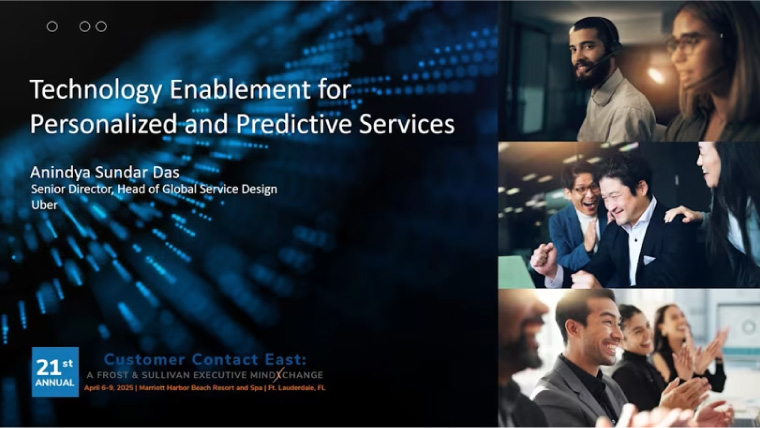When I first started designing omnichannel experiences just over 10 years ago, I couldn’t find much guidance. Mobile was still nascent; neither the iPhone nor the iPad had been launched yet. Digital marketing was only slowly moving past the blinking banner stage, and social media was barely a common form of entertainment and connection, let alone the juggernaut of all communication. Voice recognition, AR, VR and AI were all just blips that seemed reserved for think tanks and not critical tools to be leveraged for improved business processes and better customer experiences.
It’s amazing how quickly technology has changed, and along with it, consumers’ expectations. We know that our customers expect to choose when, how, and where they interact with our brand. But experiences are often designed and launched entirely separately within channels, with different teams, functions and disciplines creating their own independent interactions according to the specific area they are focused on. True omnichannel experiences require different ways of thinking and working. Following these tested Five C’s of True Omnichannel Experiences will help ensure your success:
1. Convenient
Convenient experiences are easy, expedient, and allow consumers to complete goals and tasks in the most streamlined way possible. Depending on the circumstance, different channels can provide different types of convenience – the ability to search and browse the breadth and depth of available information on a website, the anytime, anywhere flexibility of a mobile device, the experience of touching and feeling a product in a brick and mortar store, or the ability to ask a live person for help in a moment of need.
To support convenient omnichannel experiences, we need to meet consumers where they are and where they want to be, rather than force them to the channels or transactions we want to promote. In your role, work with others across the organization to determine which might be the most convenient touchpoints to satisfy particular consumer goals and needs across their journeys and lifecycles.
2. Consistent
For omnichannel experiences to be successful, consumers need to feel comfortable that they know who they are dealing with, and what to expect in every environment where they interact with a company. This comfort comes from providing a consistent experience regardless of the channel or medium. An experience that consistently meets consumer expectations, delivered through consistent messaging and communications, and providing consistent interactions and levels of service.
The key to creating consistent omnichannel experiences is to know and understand your customer and how and where they interact with you and to use and re-use information across channels where appropriate (e.g. product information or promotional messaging). Work within your organization to create solid and timely ways of communicating across all divisions so that every channel is aware of the themes that you determine need to be consistent for your customers.
3. Connected
Omnichannel experiences also need to be connected, supporting seamless transitions across and between channels or touchpoints, and minimizing any gaps or bumps across these different environments. The line between digital and physical has now blurred, and true omnichannel experiences provide connected bridges that provide natural, expected paths through a variety of potential interactions and transitions between channels.
This requires us to think about the experience of transitions. We must design for connections across the space between touchpoints, interfaces, and channels. If your customer starts via a mobile map and then transitions to a website experience or a brick and mortar interaction, consider how any hand off between channels will provide that needed connection or bridge.
4. Contextual
While providing consistent experiences is a key principle for designing successfully across channels, we also need to maximize the channel and device capabilities for the appropriate consumer context. For example:
• Shopping at a brick and mortar location allows us to touch or smell items and try on items, feel their weight and see their size
• Using a website provides the ability to do in-depth research and comparisons that might be useful for complex or large commitments
• Speaking to someone in person, on the phone or via live chat allows two-way interaction in real time that can answer complicated or open-ended questions
• Using a mobile device enables us to easily merge the physical world with the virtual by finding our location or identifying important pieces of information about the environment around us
In each of these situations, you should consider the experience needed within the appropriate context. Is something needed immediately? Is our consumer on the go, unable to connect directly with our brand in the moment, but needing support or service ready when they are? Serving the contextual principle requires us to determine and provide the exact right touchpoint, channel or interaction according to the consumer’s point in time, their needs, and capabilities.
5. (A)cross Time
Finally, true omnichannel experiences require that we understand and design for the full customer journey across time and touchpoints; whether this spans days, months or even years. The experience doesn’t stop when the consumer closes our website, leaves our store, or finishes their mobile app transaction. Consumers often interact with our brand in multiple ways over multiple time periods, and a good experience across time can outweigh the impact of any particular moment.
This means understanding the full consumer lifecycle. We often interact with a brand or company over time via multiple websites, apps, and services rather than via a single event in a single moment. We need to determine the full set of potential exposures and interactions and address all of the related touchpoints and connections even when they span days, weeks or months. Successful omnichannel experiences don’t just look at a specific moment in time or even a particular task or interaction, but consider all of the interactions the consumer has had, and will have with our business, across the full scope of the relationship.
Implementing true omnichannel experiences isn’t easy. The work is more cross-divisional and cross-functional than many of us are used to, and the additional layers mean more stakeholders to collaborate with, more opinions to incorporate, and more disciplines to understand. The continued proliferation of new technologies and devices necessitates an ever increasing complexity in the possible touchpoints consumers may choose to interact with your brand. We all need to work together across these 5 principles to ensure that all channels, touchpoints and services can support true omnichannel experiences.
Samantha Starmer is a customer experience executive with over 15 years’ experience leading large, customer experience and product innovation programs from strategy through design and execution at companies such as Ralph Lauren, Sapient, Razorfish, Microsoft and Amazon. She is excited about her new opportunity at Capital One.
Throughout her career, Samantha has led global digital transformation efforts overseeing the ideation, requirements, design and execution of new features and functionality that support seamless consumer experiences across all touchpoints of the customer journey. Her passion is the intersection between humans and technology, and how to ideate, create and deliver holistic experiences across time and space, physical and digital.
Samantha has taught many graduate level courses focused on user experience and information management at the University of Washington and Kent State University. She has also been fortunate to present and teach workshops globally on digital product design, service design and other aspects of the consumer experience.



